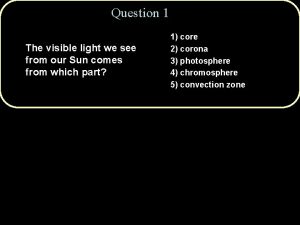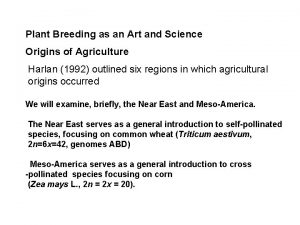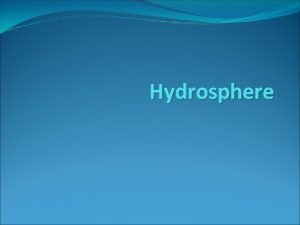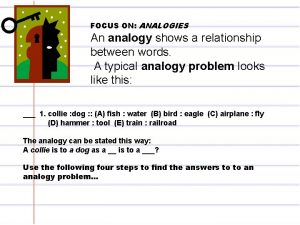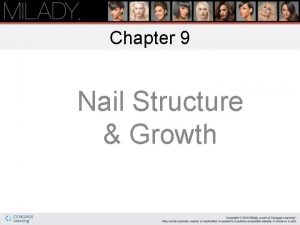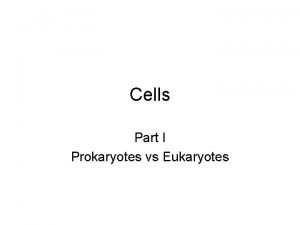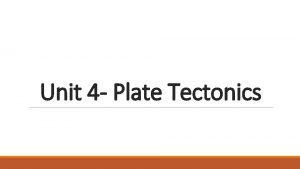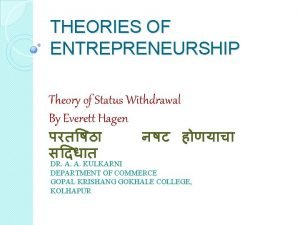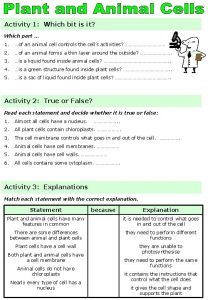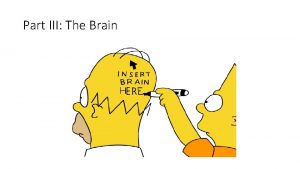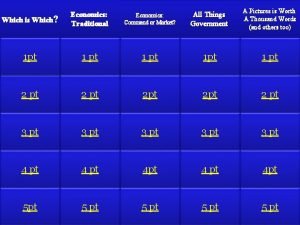Which part Which part Which part Which part

























- Slides: 25

Which part?

Which part?

Which part?

Which part?

Which part?

There are many more?

Disease and Immunity Biology I Honors

What are the categories of organisms that cause disease? Bacteria Viruses Fungi Protozoa Parasites

How do each cause disease? ? Bacteria release chemicals Viruses Take over a cell and use it to make more virus Fungi Take the cells’ nutrition and occur in warm moist places. Protozoa Use healthy cells to complete their life cycle. Parasites Grow and feed in a host.

What is an organism that causes disease called? Bacteria Viruses Fungi Protozoa Parasites A Pathogen

Examples of Pathogens

How do scientist confirm that an organism actually caused a disease? Koch’s Postulates Pathogen must be isolated in every case Then the isolated organisms must be grown in pure culture. Healthy animals infected with organism contract same disease. The pathogen is then re-isolated in culture and is identical to the initial organism

Pure vs non-pure culture

Immunity: The Cells

The Proteins: – Antibodies make pathogens ineffective. antibody pathogens Interferon prevents viruses from infecting healthy cells

Types of Immunity Passive Active Genetic: immediate but short lived Pathogen specific response Mother to child: breast milk, umbilical cord Acquired Immunity is an effect. Vaccines

Antibiotics vs. Vaccines Antibiotics and Antiseptic: Cause bacteria to burst.

Antibiotics vs. Vaccines: Acquired immunity against viruses. . Given to prevent illness. Contain the antigen of a weakened pathogen. http: //mit. tv/ID 72 AB


Immune Responses Non-Specific

Non-Specific Immune responses Happen the same way no matter which pathogen you have.

Inflammation and Fever Mast cells, found in the tissues, release chemicals, which cause the Hypothalamus, in the brain to increase the body’s temperature. Low fevers increase the production of mature of WBCs.

Specific Immune Responses Lead to immunity Occur on cellular level Pathogens are identified by their Antigens. 2 Types of Specific Immune Responses Cellular Immune Response Humoral Immune Response

Specific Immune Responses Cellular Immune Response Binds and bursts pathogen Phagocyte engulfs pathogen antigens T cell T-Cell binds to receptors and is activated receptors activated T cells memory T cells T-Cell divides

Specific Immune Responses Humoral Immune Response Pathogen binds to antibody Located on surface of a B-cell Phagocytes EAT Yum!! B cell pathogen T-cell then attaches To the antibody and B-cell is stimulated. antibodies T cell Produce antibodies memory B cells activated B cells B-Cell divides
 Part whole model subtraction
Part whole model subtraction Unit ratio definition
Unit ratio definition Brainpop ratios
Brainpop ratios Technical description
Technical description Standard bar parts and layout
Standard bar parts and layout The part of a shadow surrounding the darkest part
The part of a shadow surrounding the darkest part Two way anova minitab 17
Two way anova minitab 17 Which post holds up the greater part of the load
Which post holds up the greater part of the load Weathering in the high plains
Weathering in the high plains Mummy oh mummy poem
Mummy oh mummy poem The visible light we see from our sun comes from which part
The visible light we see from our sun comes from which part Why plant breeding is an art
Why plant breeding is an art Hydrosphere includes *
Hydrosphere includes * Part of flower that makes pollen
Part of flower that makes pollen What is an analogies example
What is an analogies example As a person ages parts of the nail matrix
As a person ages parts of the nail matrix Chapter 3 cells and tissues figure 3-7
Chapter 3 cells and tissues figure 3-7 Which part of the cell contains genetic material
Which part of the cell contains genetic material Objectivity in writing a summary
Objectivity in writing a summary Heat flowing out of earth as it cools is one form of
Heat flowing out of earth as it cools is one form of Carry flag
Carry flag The optional element of personal letter that is …
The optional element of personal letter that is … Timeline fluid mechanics
Timeline fluid mechanics Which is not part of a store’s strategy mix
Which is not part of a store’s strategy mix Which part of the earth is the hottest?
Which part of the earth is the hottest? What is entrepreneurship theory of withdrawal of status
What is entrepreneurship theory of withdrawal of status










